Simple Changes You Can Make An Eco-Friendly Home
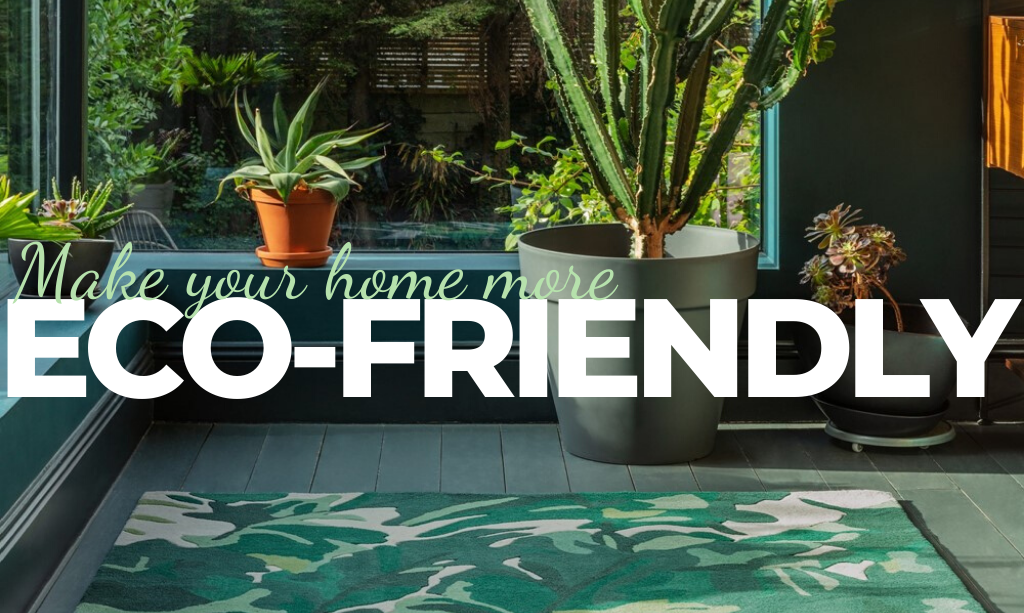
More and more we hear the dire warnings of climate change and the drastic impact it has on our environment. The need for change is important, now more than ever, to protect our planet. It’s time to think about some of the positive changes we can make to have a role in saving our planet by having a more eco-friendly home.
So if you are interested in finding out how you can make your home greener while saving some coin, keep reading!
Looking to improve a specific room? No problem!
What Is An Eco-Friendly Home?
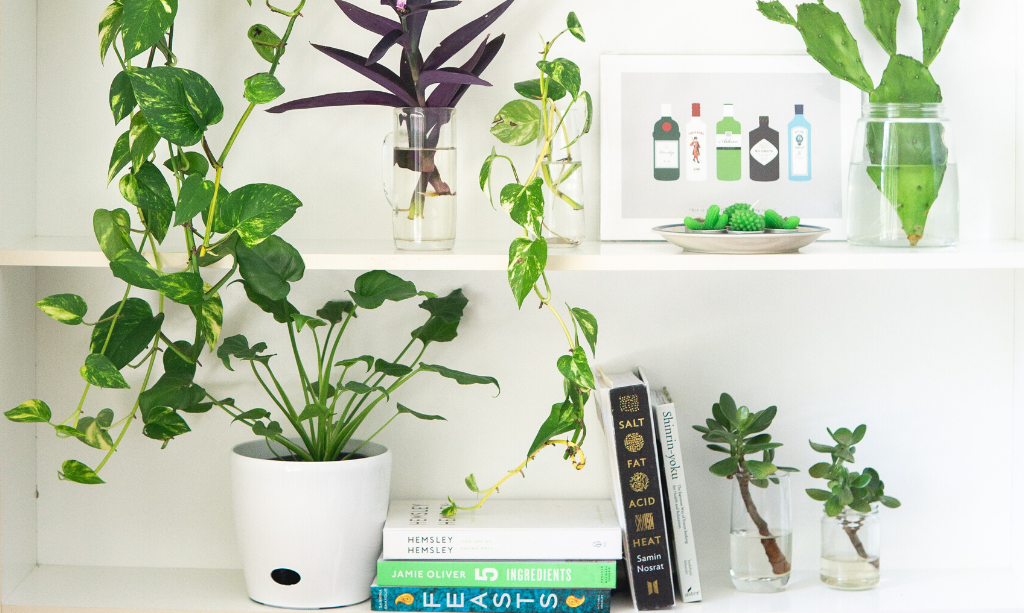
A question often asked, what exactly is an eco-friendly home?
This type of question makes sense with Eco Homes being a fairly new concept. Previously, we were not quite aware of the impact our homes have on the environment with new technology blooming, we understandably felt we were moving forward.
To answer this question, an eco-friendly home makes a conscious effort to be more efficient and sustainable, a lot of eco-friendly options are also super cost-effective and can certainly save you a pretty penny!
How Can I Make My Home More Eco-Friendly?
Living Room
1) Replace your bulbs with an energy-efficient option
It’s a bright idea (pardon the pun) to swap out your old bulbs for LED lights. It may seem a small change, but it’s an important one. Not only do LED bulbs provide great lighting but they are also up to 80% more energy efficient than the likes of fluorescent and incandescent lights, to make for a more eco-friendly home.
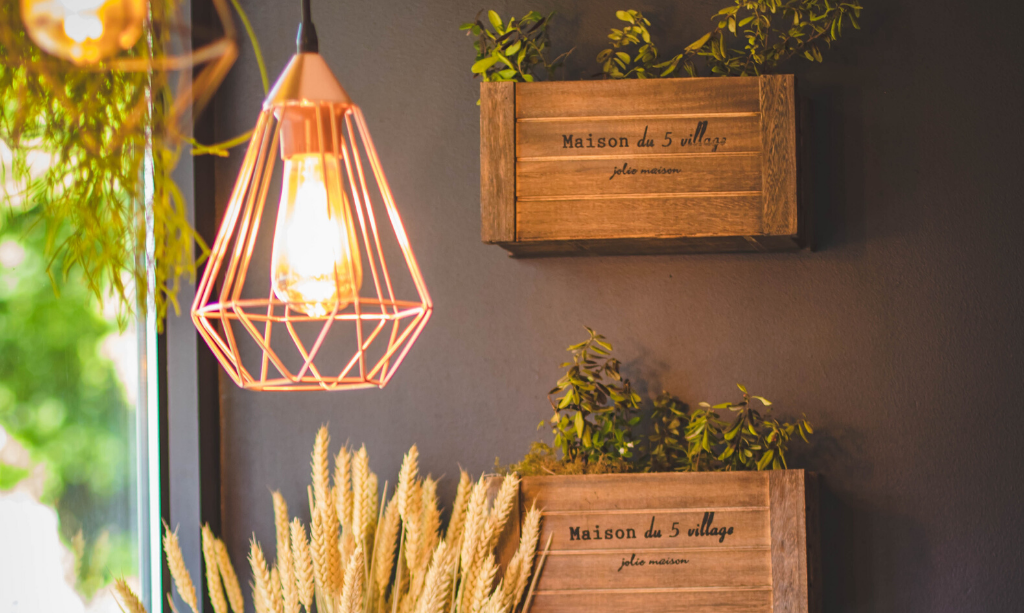
2) Unplug electronics that are not in use
It was found in research that on average TVs are typically on standby for up to 17 hours a day! To lower this and save on your electricity bill be sure to pull the plug when not in use. Make this easier by using extension leads, so you can turn off all of your unused appliances at the flick of a switch.
3) Embrace the natural daylight
Enjoy the natural light of the day. Instead of using lights and lamps to brighten your living room let the natural light in by opening any blinds/curtains. This not only saves on electricity usage but is sure to put a smile on your face as the gorgeous rays of the sun light up your home.
4) Use candlelight in the evenings
Candles really are a wonderful thing providing light, warmth and a cosy ambiance. Cuddle up with the lights and heating off enjoying the bliss that candlelight has to offer knowing you are making a positive impact on the environment and your bills.
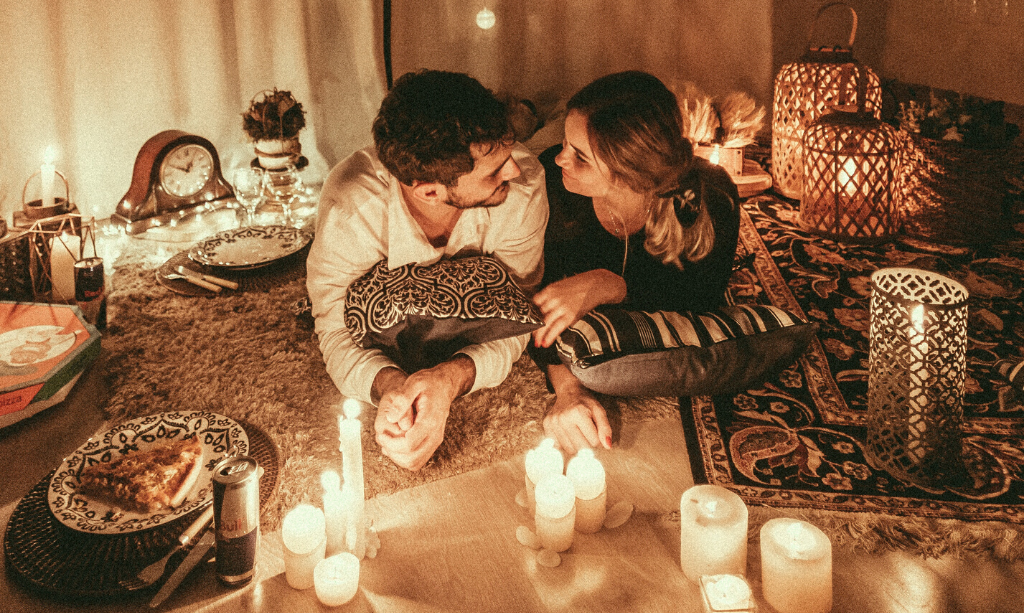
5) Choose a carpet made from a sustainable source
Unfortunately, not all carpets are made from enviromently friendly materials. If carpet is something you are thinking of investing in we recommend one with a natural fiber backing as these are produced in the least harmful way that avoids using harsh chemicals and damaging our enviroment.
6) Use your curtains wisely
Curtains are key, choosing thermal lined curtains is a great way to keep your home toasty. By keeping them open throughout the day you are allowing the heat from the sun warm your home up. Once the sun has set this is the best time to close your curtains trapping in all the warmth so you can reduce your heating use.
7) Utilise a rug to warm up your home
As lovely as hardwood floors are, walking on them in the winter months is enough to send shivers down your spine! A rug is the perfect solution to add warmth to your home without the need of costly underfloor heating. Similarly to carpets, we would recommend opting for a rug made of natural fibres like wool, jute, sisal or seagrass.
For more information on natural rugs that are the perfect match for eco-friendly homes, check out our blog Ultimate Guide To Natural Fibre Rugs.
8) Snuggle up with a comfy throw
Not only is getting snuggled up in a warm throw absolute bliss, but it also helps keep you warm meaning no need for the heating to be on full blast. So you can save money and the planet while cosied up on the sofa binge-watching your fave show!
9) Bleed Your Radiators
Radiators are an excellent way to keep your home warm, but if your radiators aren’t heating to the top there’s a chance they’ll need to be bled. Bleeding a radiator is super simple. All you need to do is pick up a radiator bleed key (roughly £1 in any DIY shop) to open the little valve at the top. Once you’ve done this you should hear air hissing and as soon as you see a drop of water, make sure to close it up again. Now you have warmer, more energy efficient radiators!
10) Programmable thermostats are the way forward in an eco-friendly home
Control your home heating at the touch of a button. Programmable thermostats allow you to monitor both your heating and cooling systems. For example, you can programme it so that your heating is off whilst out at work. As a result of doing this, I guarantee you will notice a dramatic difference in your usage and bills.
11) Recycle/Upcycle old furniture, turn vintage into modern!
That old armchair may not be in the best state but buying a new one will cost an arm and a leg! Upcycling is the key to all your woes. Get creative by reupholstering old furniture, not only is this so much better for the environment but you will have a one of a kind piece that can’t be bought anywhere…sure to leave all of your visitors super envious!
Alternatively you can opt for furnishing made from recycled materials like our Sushi Rugs, made with recycled polyester, check it out here.
12) Consider your choice of wood
When it comes to saving the planet, deforistation is always a huge topic. If you opt for hardwood flooring in your home ensure that the wood you are using is FSC-certified. In lament terms, the wood is sourced from forests that are specifically for the purpose of creating wood for our use. Or even better, iff you can get hold of reclaimed wood this is not only a great way to recycle and reuse but it adds a super rustic vibe to any room!
13) Cuddle up with your loved ones
Whether that’s your partner, friends or fluffy pets, body heat is the most natural form of warmth. Not only is this another great way to reduce your heating usage, but as a result of cuddling you will feel so much better inside. Studies have found that cuddling releases oxytocin, a hormone known as the feel-good hormone.
For more amazing reasons to cuddle up, check out Bustle’s blog.
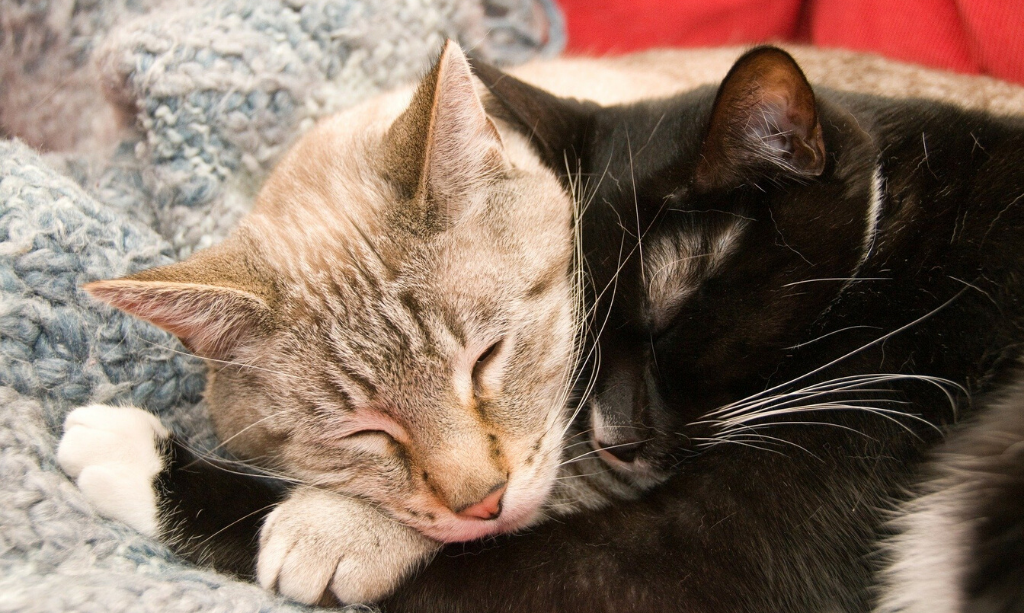
14) Invest in a draught excluder
As the name may suggest draught excluders are a brilliant way to prevent those chilly draughts. It is common, especially in older homes, for those pesky gaps under the door. Keep the cold air out and add a splash of character to your home with hundreds of stylish excluders available on the market.
15) Use A Chimney Balloon
It’s now fairly common to have fireplaces that are merely decorative. However, if you’ve got a real fireplace then chances are you’ll be losing a lot of heat through your Chimney. To prevent this, you can use a chimney balloon that goes up your chimney and inflates until it fills the chimney making it much more insulated. Just remember to remove it before starting a fire!
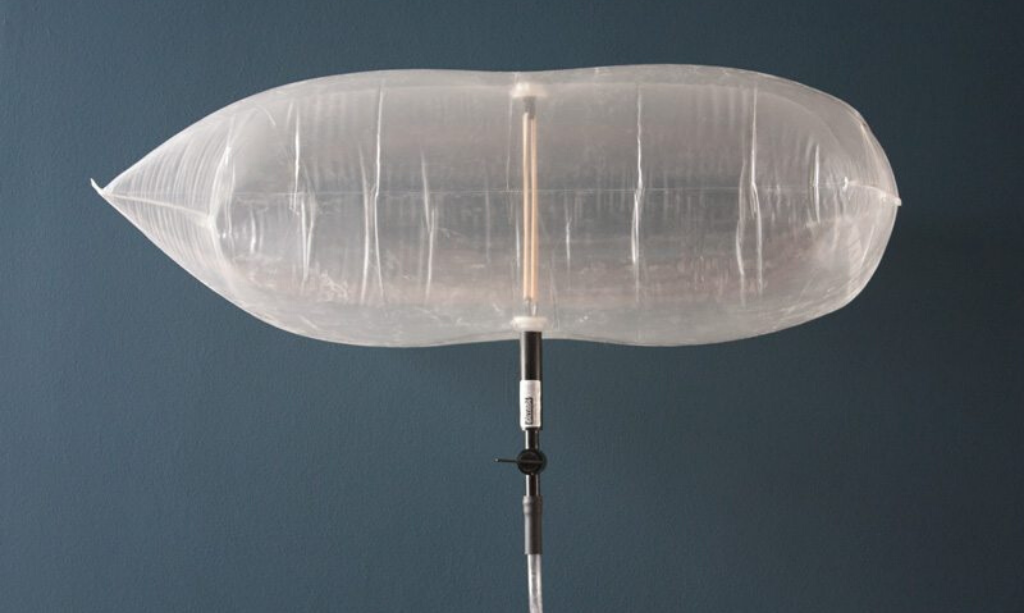
Kitchen
16) Reuse empty jars for useful storage and decoration
Though glass is recyclable, it is definitly a brilliant idea to reuse your jars. There are so many wonderful ways a glass jar can come in useful in your home, from excellent food storage to pretty, vintage vases. They bring the added style an eco-friendly home has to offer.
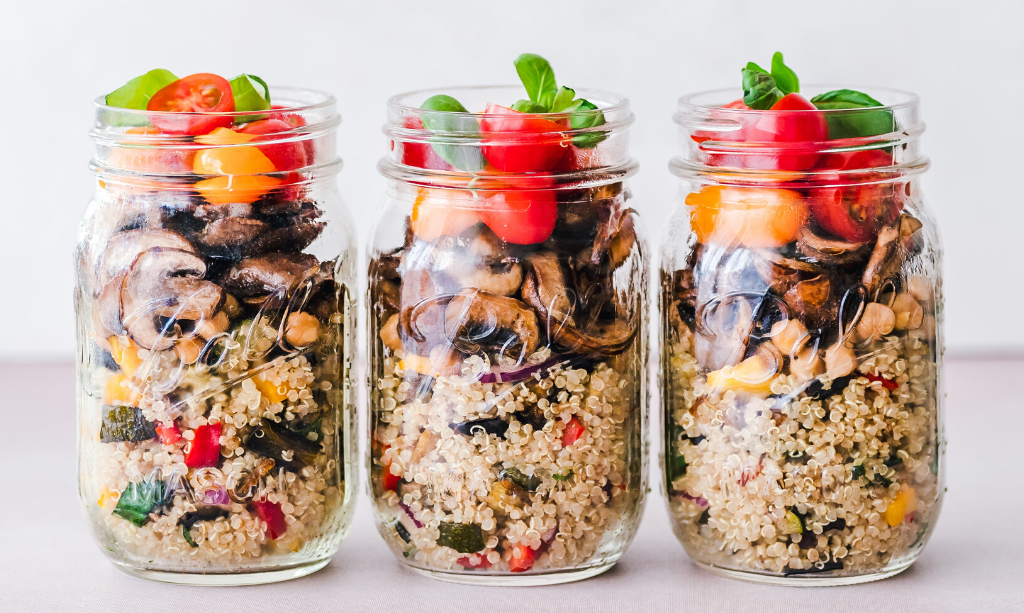
17) Compost your scraps
No matter how much of a foodie you are there is always going to be scraps of food to throw away at the end of a meal. Instead of throwing them into the trash be more eco-friendly by storing them in a compost bin. In addition to this being a huge help to the enviroment, it is also yummy food for your plants!
18) Recycle your rubbish the right way
Recycling is the easiest but most effective way to have a positive impact on our planet. Make things easier for yourself by investing in a multi compartment recycling bin. This 100% makes the process easier when separating your rubbish, for instance separating your paperwaste from your tin cans.
19) Grow your own indoor herb garden
A tasty way to add flavour to your food, homegrown herbs are a great option to avoid package waste. They are amazing for you with none of those nasty pesticides often used in large scale agriculture. Create an eco-friendly home with added taste!
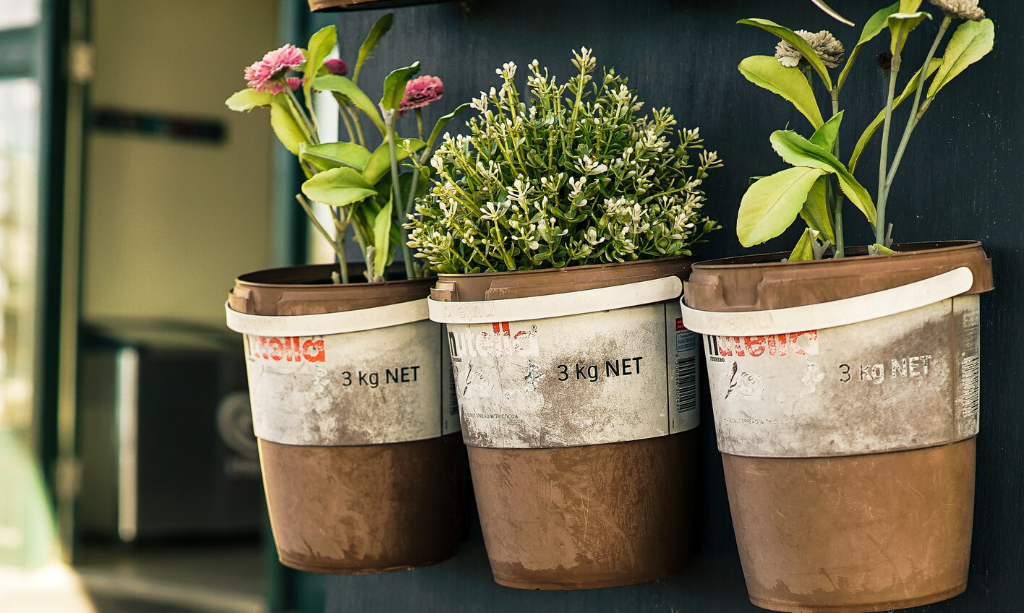
20) Reduce your plastic use
Plastic…the dreaded word. The majority of plastics are non-recyclable, it is not easy to completely avoid plastic in this day and age with so much packaging being made from it. However, there certainly are ways in which you can reduce your plastic usage for example using metal water bottles and bamboo straws.
21) Make a reusable bag your best friend
A reusable bag will soon become your best friend. Plastic bags are increasingly damaging our planet, with supermarkets now placing a 10p charge on carrier bags in the UK as a prevention method, you will also be saving yourself money as well as the enviroment. Available in many designs and size, make a reusable bag a staple in your shopping trip.
22) Shop from your local green grocers
Greengrocers offer a wide range of scrumptious fresh fruit and veg without all the added packaging that big supermarkets often use. In addition to the reduced amount of plastic use and creating a more eco-friendly home, you will also be helping your local economy flourish!
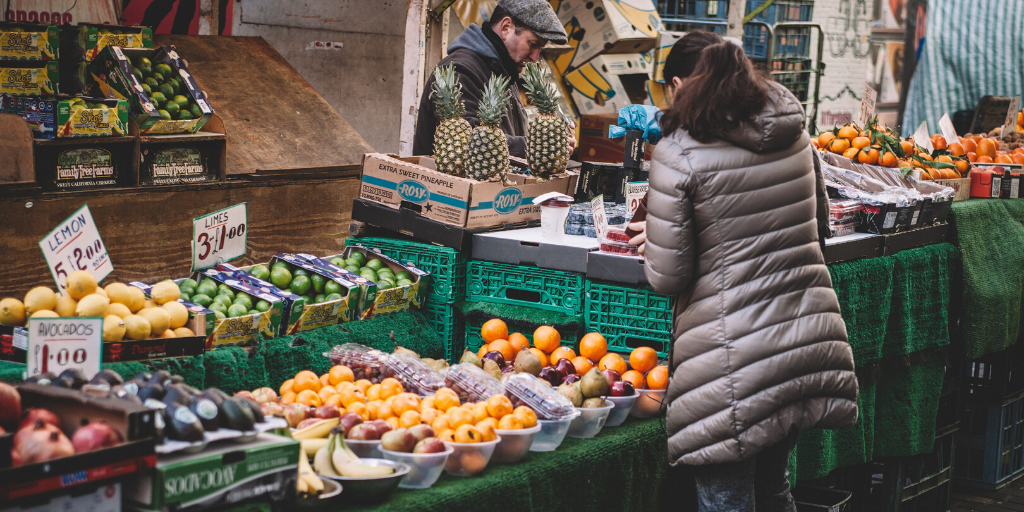
23) Eat from home instead
Save your cash by eating in instead of going out for fancy meals or ordering in takeaways. As well as saving yourself some money, you are much less likely to waste food as you can control the size of your portions.
24) Avoid doing the food shop on an empty stomach
Shopping on an empty belly…not a good idea! I am sure you have heard the phrase having eyes bigger than your belly, when shopping on an empty stomach it is easy to fill the trolley right to the brim. Food wastage is a huge problem that is not great for the environment, to help reduce your food wastage, portion control is key.
25) Use house plants to freshen your home
House plants are amazing at naturally cleaning the air. They take in the CO2 we breathe out and produces Oxygen, helping keep your home an easy breathe area with an improved air quality.
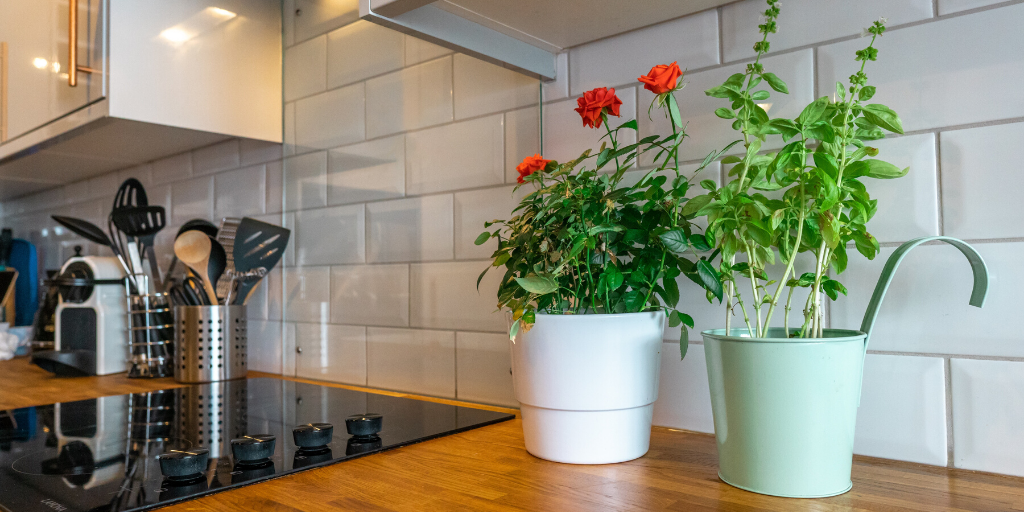
26) Invest in a pressure cooker
Pressure cookers are the way forward! Unlike traditional gas stoves, they do not produce greenhouse gas emissions that are not only dangerous to our Ozone but also to us. Similarly, they have a reduce electric power consumption compared to electric stoves saving you lots of money on your bills.
27) Multi task in your oven
Once you get into the knack of perfect timing, it will be a breeze to cook all parts of your meal at once. Utilise the many racks to cook your full meal instead of using the like of the stove, grill and microwave as well as the oven.
28) Introduce meatless Monday to your week
Vegetarianism isn’t for everyone, but by skipping out on beef for just a day each week you can make a surprisingly big impact on the environment. In research, it has been found that by eating one less burger a week for an entire year the environmental impact is the equivalent of taking your car off the road for 320 miles.
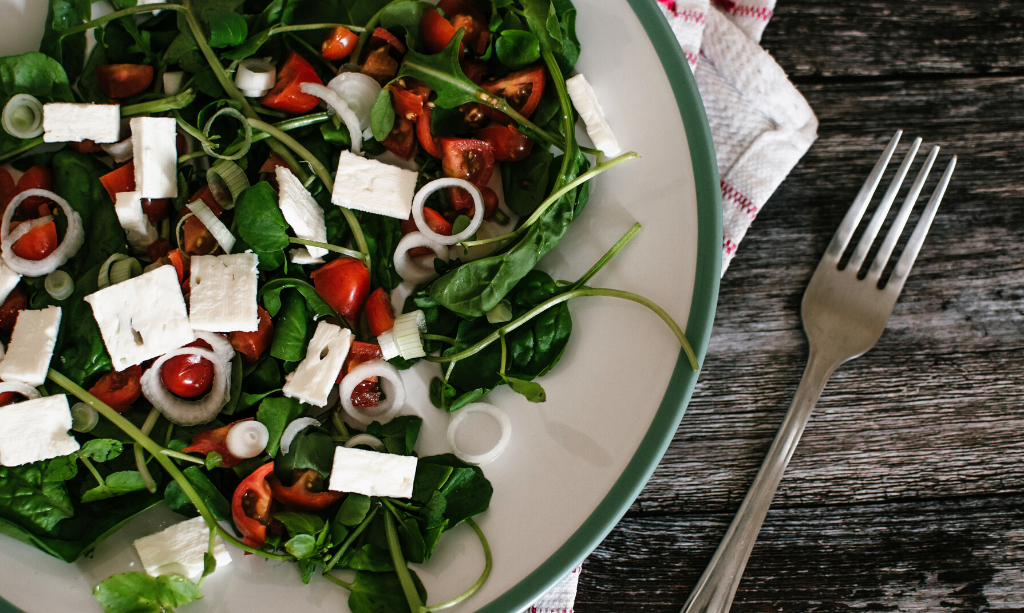
29) Use energy-efficient cookware
Prevent any excess energy waste by using the best cookware for your cooking. There are two main aspects you should consider in your cookware, size and material. If you are using a larger pot , a lot of energy will be wasted on heating empty space, opt a smaller more compact size dish. Materials with differ depending on the meal you are making for example cast iron retains heat for longer where as copper heats up much quicker.
30) Draught Proof Your Home
If your home has a draught, make sure to patch it up! Filling in any gaps around windows and doors can help you save on your heating bills and reduce your usage to help make an eco-friendly home, so why not spend a few pounds on window draught excluder – insulating tape is a great investment. Fitting it is a breeze too!
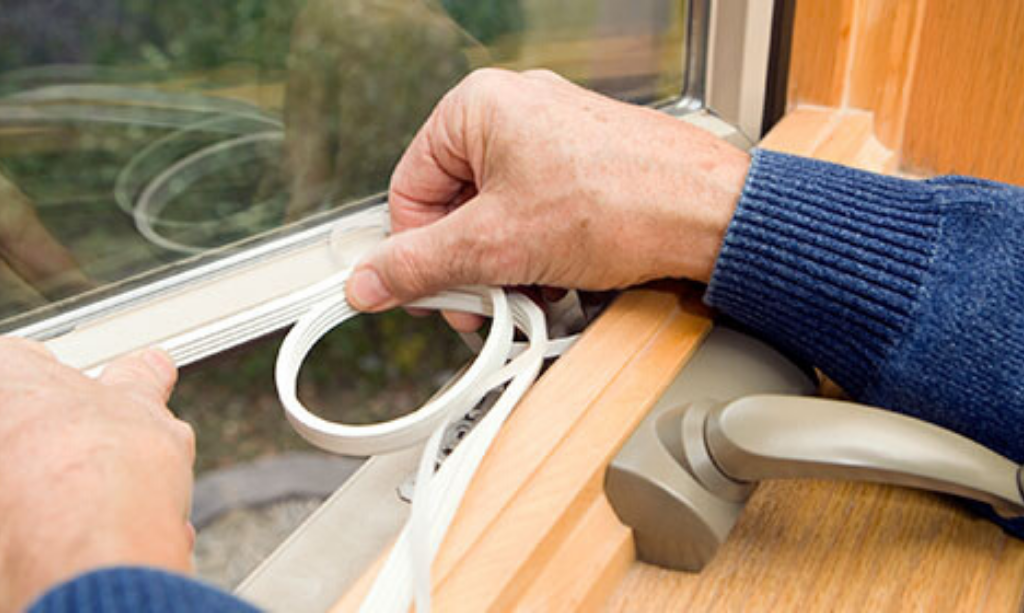
31) Keep your fridge cool
It’s something most of us don’t think about, but by ensuring that your refrigerator is in a cool shaded area in your kitchen the less energy is needed to keep your fridge cool. Keeping your energy down and your food fresher for longer.
Bathroom
32) Support companies that promote recycling or reuse
Now a days many brands are beginning to embrace more eco-friendly routes with their products. For example, the likes of Lush encourage returning empty products with the reward of a free product in return. Additionally, many companies are opting to use cardboard packaging for their beauty products which is making a huge impact on reducing plastic usage in the industry.
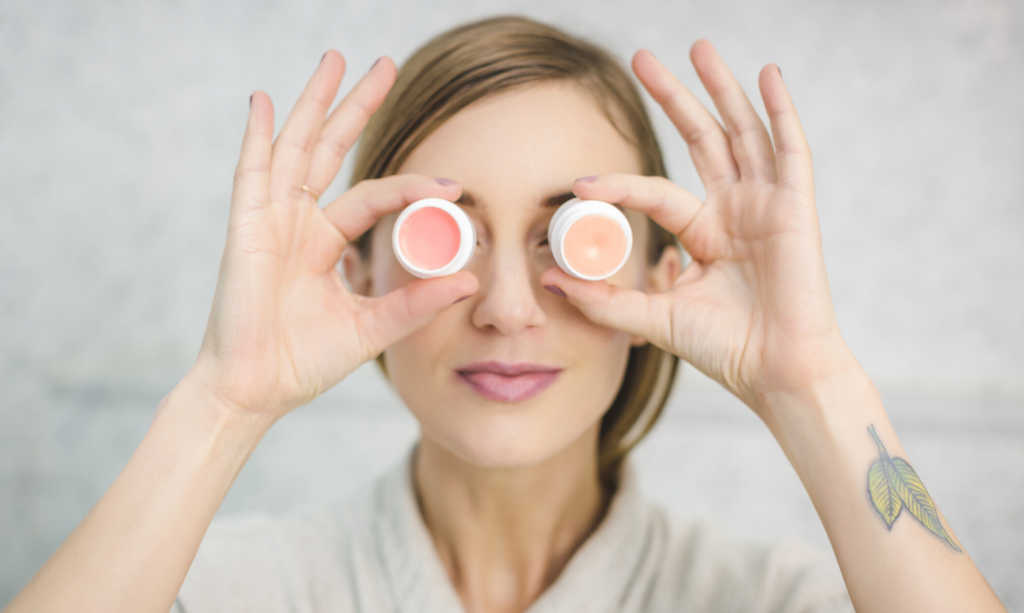
33) Use ethically sourced beauty products
You may not believe it but though many companies are improving, not all beauty products are eco-friendly. Lots of products from shampoo to lipsticks contain palm oil. Palm oil retrieval has a massive impact on our environment with the destruction of habitats in which endangered animals live, be aware of the ingredients in these products and opt for organic choices.
34) Be quick to fix any leaky faucets
A leaky faucet that drips, one drop per second can waste over 13,638 litres per year. Yes, you read that right! Just think how much money you could save on your water bill with a quick visit from the plumber, it’s an easy way to make your home more eco-friendly.
35) Speed up your showers
Lessen the time spent singing in the shower, as every minute a running standard shower head releases 11 litres of water! By making your shower an in and out job I guarantee you will notice a big difference in your water bill.
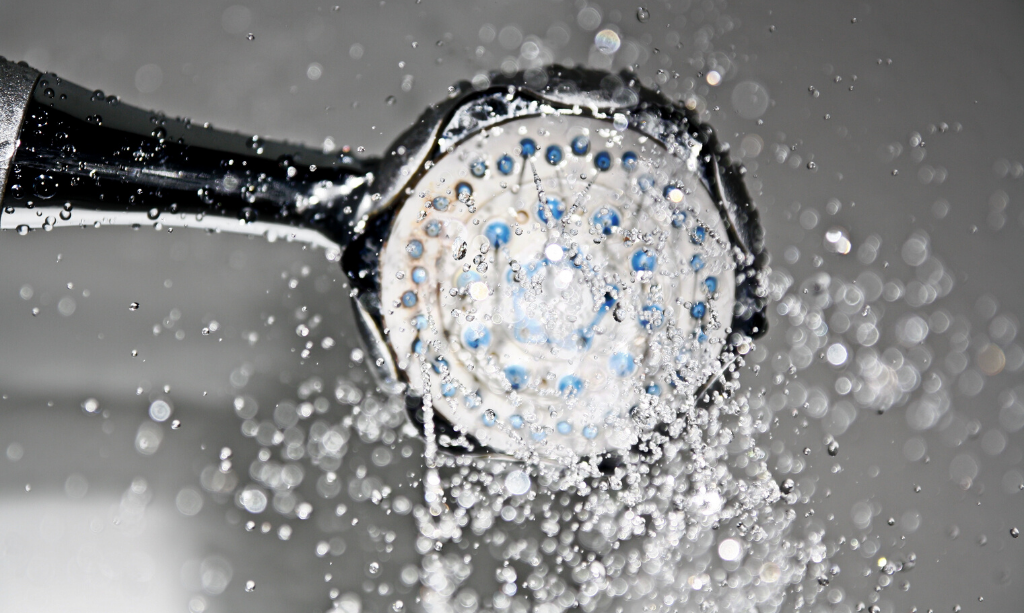
36) Fit your taps with aereators
Also known as flow regulators, aerators are a small attachment that can be fitted on taps to control the amount of water that flows through. They mix the water with air so that you can regulate your water usage without affecting the water pressure.
For more information on aerators check out Save Water Save Money’s article, it is super useful if you are looking to create an eco-friendly home!
37) Install a low flow toilet
If you are looking to have a bathroom refurb, opt for a low flow toilet. They are a super easy way to save on your water usage. Due to the low flow you only use 4.8 litres when flushing compared to the standard flush of 6 litres.
38) Use plants to purify the air
Going back to an earlier point, house plants are great for a natural air cycle, however, there are certain plants that are best suited for each room. Chlorophytumcomosum Aka Spider plants are an amazing choice for the bathroom as they hold air-purifying properties and absolutely love the moist air after a hot shower!
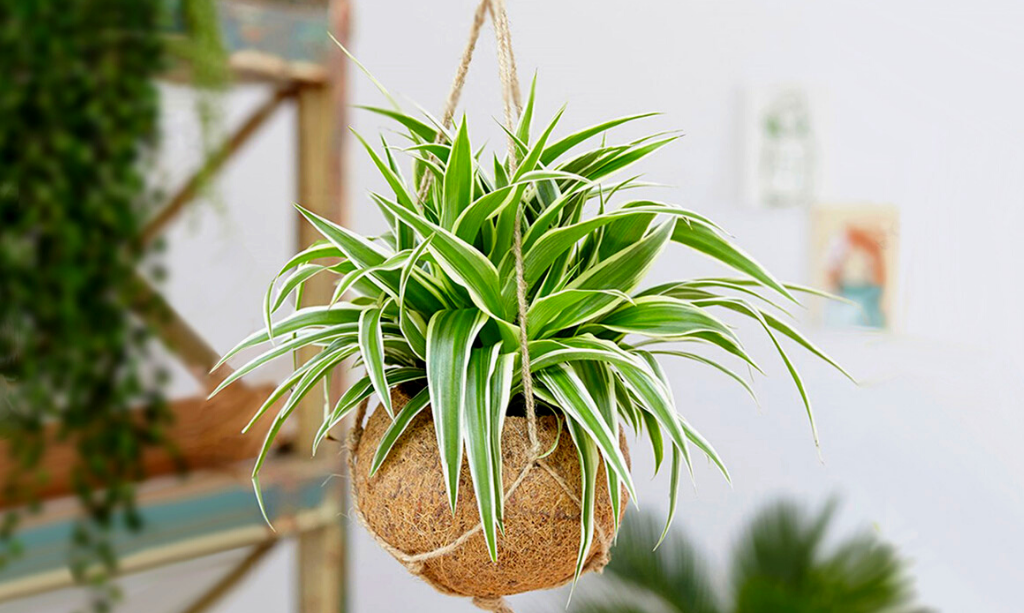
39) Use eco-friendly alternatives to wet wipes
Did you know non-biodegradable wet wipes can take up to 100 years to fully break down! This is due to the plastic that is inside of them, instead purchase a cotton face cloth you can wash and reuse to clean off any make up.
40) Opt for organic cotton towels
As much as a fun coloured towel can add character to your bathroom, many of these towel are dyed with harsh chemicals that are then disposed into the environment. A plain organic cotton towel is the way forward as the most sustainable option for an eco-friendly home.
41) Use sustainably sourced toothbrushes
One billion plastic toothbrushes are thrown away each year in the United States, creating over 50 million pounds of waste annually. Ditch the plastic toothbrushes and switch to a sustainable bamboo toothbrush. Bamboo is a super sustainable resource as a fast growing and self regenerating plant, it is the way forward from the old fashioned plastic.
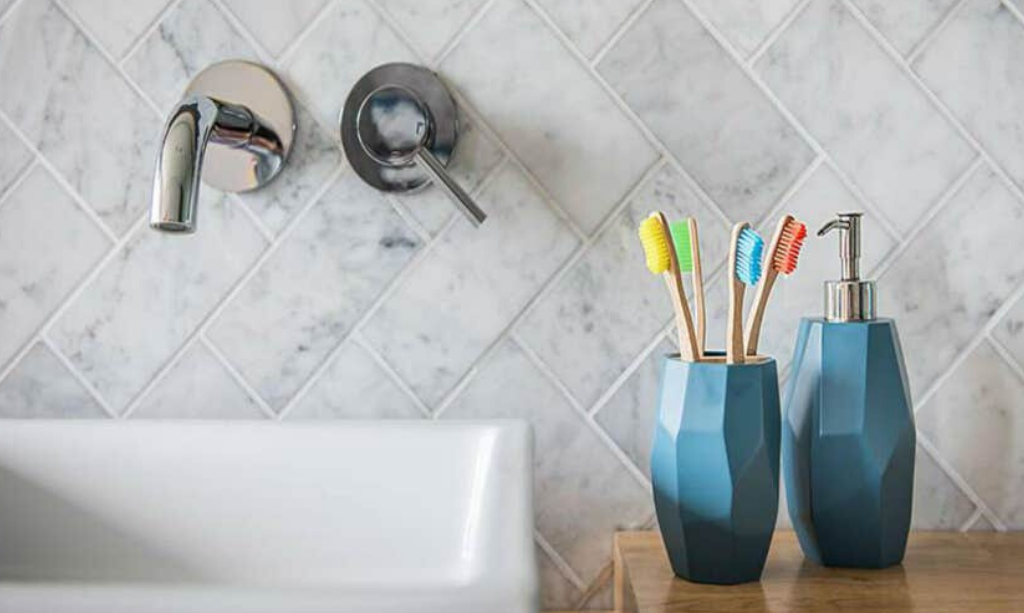
42) Ensure to turn the water off while brushing your teeth
Its easy to think that leaving the tap running while brushing your teeth is harmless, but overtime the water wastage adds up. It is a simple way to reduce your water wastage and create an eco-friendly home.
43) Make baths a special treat
Granted baths are the perfect for winding down after a long day, but with a standard size bath holding up to 302 litres of water we would recommend keeping baths as a special treat rather than a daily wash.

44) Switch to an energy-efficient vent fan
Switching to an energy efficient vent fan is a simple way to reduce your electricity usage with them being 70% more energy efficient than standard fans.
45) Use recycled toilet paper
At first the thought of recycled toilet paper may have you wondering what on earth it is recycled from! Don’t worry it’s not previously used toilet paper, in fact large bales of recycled paper are put into a pulping machine. The paper is mixed with lukewarm water to form a pulp which is then entered into an ink-removing process for perfectly clean and soft recycled toilet paper!
Bedroom
46) Choose the best duvet for you
If you find you struggle to sleep at night due to a cold room, there are a few tricks to keep cosy without having the heating on full blast. Finding the perfect duvet for you will be game changing, visit stores to try before you buy, the higher the tog the warmer it will be. If your room changes by the season, an all season duvet could be just what you need!
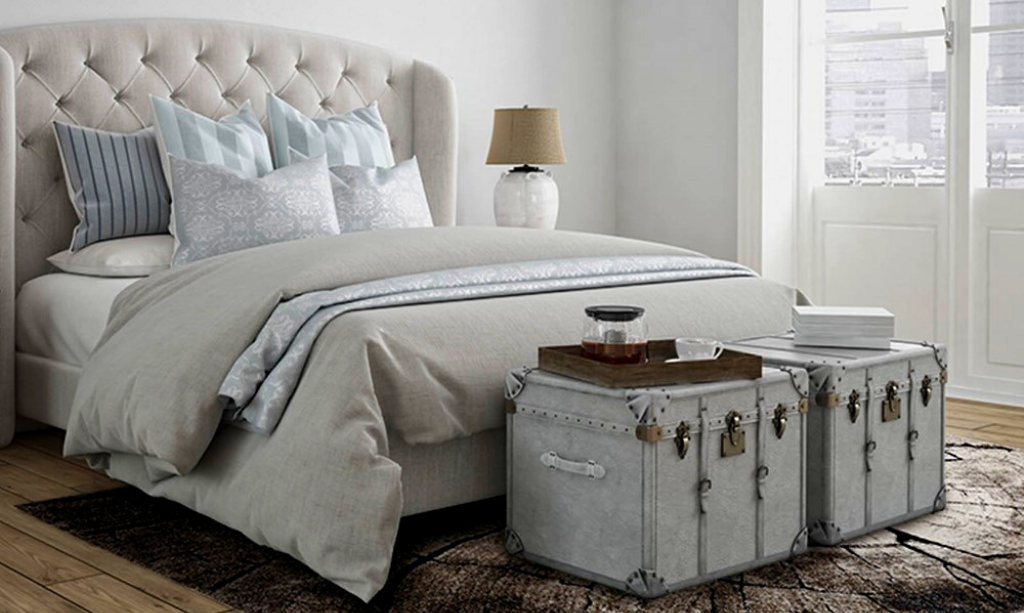
47) Double up for extra warmth
Another quick and easy way to keep warm is by doubling up. Whether that is adding a quilted throw or a chunky knit blanket, you will be left feeling as snug as a bug!
48) Donate unwanted clothes
Fashion trends are quick to change, though fast fashion has a detrimental impact on our environment there are ways in which you can keep on top of the trends in a more eco-friendly manner. Clothes you no longer love can be donated in many ways, whether it’s to your local charity shop or passed down to younger siblings, pass them on to someone who will continue to rock them.
49) Shop secondhand, it’s vintage darling!
Charity and thrift shops are the way forward! You can find some amazing pieces for unbelievable prices while also contributing towards a good cause. By shopping secondhand you are also helping the planet as big fashion companies are huge contributors to pollution in our environment.
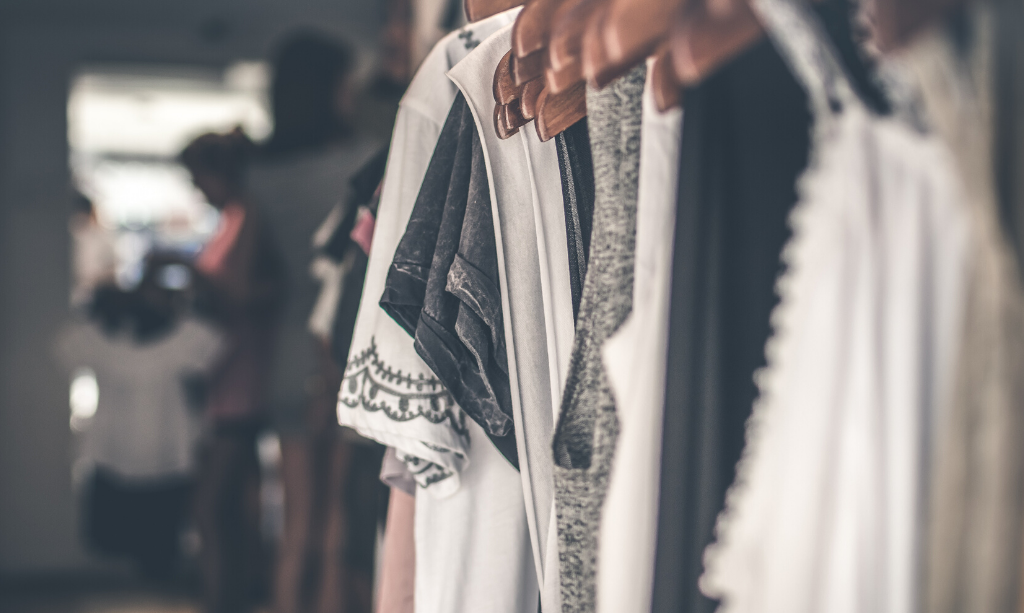
50) Reclaim furniture from charity shops and friends
Having an eco-friendly home doesn’t mean you have to compromise on style. You can find vintage pieces of furniture from charity shops for absolute bargain prices! They may need a slight touch up but the money you will save from reclaiming furniture will be worth it. You may have family and friends who are in the process of redecorating, seize this as an opportunity to adopt furniture they no longer love.
51) Use essential oils for amazing scents over plugin fresheners
As great as plugin fresheners smell they are just one more thing that makes your electricity bills stack up. Additionally, many contain toxic chemicals and VOcs, which can both be a hazard to your health and the environment. There are hundreds of natural essential oils readily available in diffusers with many gorgeous fragrances to choose from.
52) Make the most of fairy lights
Create a cosy ambience with battery powered fairy lights. Perfect for in the evenings, you can flick off the lights and chill under the pretty fairy lights knowing you are saving on your electricity bill. By using rechargeable batteries you are helping reduce the amount of batteries in landfills as well.

53) Opt for organic sheets
Duvet sets come in glorious colours and patterns but with dying these materials (often poly cotton) comes a high price that the environment has to pay! Instead opt for a more sustainable material such organic percale grown from cotton farms that rely on rainwater, instead of irrigation.
54) Your mattress matters in an eco-friendly home
Similarly, the average mattress contains a cocktail of chemicals and flame retardants which are not good for the environment at all when being produced. There are many alternative mattress’ that are more eco-friendly for you to choose from such as natural latex.
The good trade have a great list of affordable organic & natural mattress’ that you should check out if you are on the hunt for a new mattress!
55) Use Insulating Foam
Insulating foam is an excellent way to retain heat that is usually lost. If you are finding upstairs is significantly colder you may need to insulate your attic. In your attic, use a roll of insulating foam to restrict the amount of heat lost and throughout the rest of the house in areas such as the basement or other small holes use a can of insulating foam to fill the gap. Just remember to wear a facemask, goggles and protective clothing if you do it yourself, and leave sufficient gaps around the eaves (the part of a roof that meets or overhangs the walls of a building) to avoid condensation!
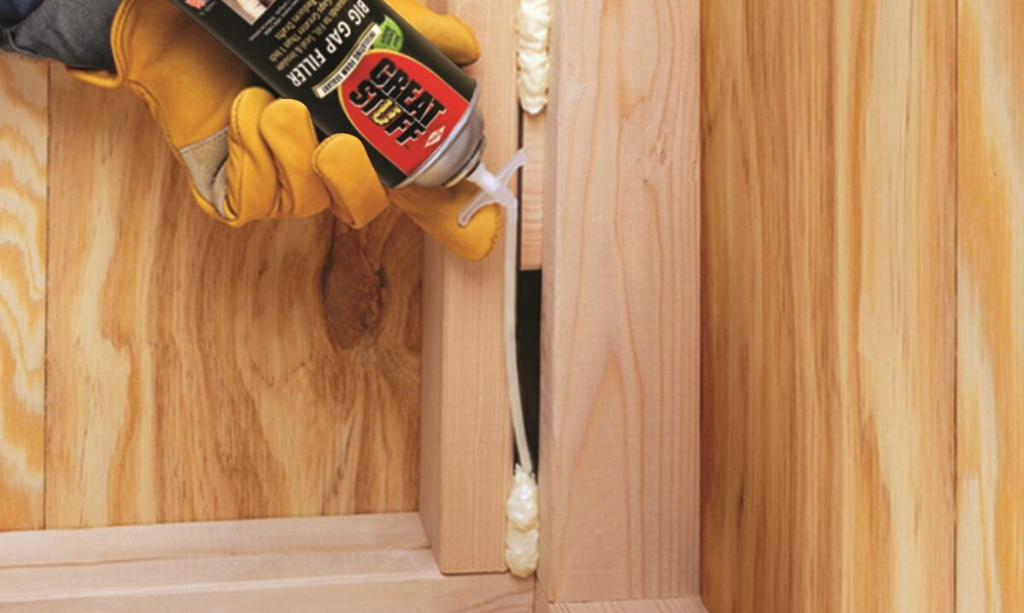
56) Try eco-friendly paints
Avoid VOC paints at all costs! Not only is the production of conventional paints a massive contribute to the CO2 omissions but VOCs (volatile organic compounds) are given off the paint up to 5 years after drying. The World Health Organisation state that professional decorators are 40% more likely to contract lung cancer because of it!
57) Use Radiator Reflectors
You can lose a lot of heat through the back of the radiator. To prevent this from happening try using radiator reflector foil. This reflects the heat from the radiator back into the room, it’s a cheap and easy way to make the most of your heating.
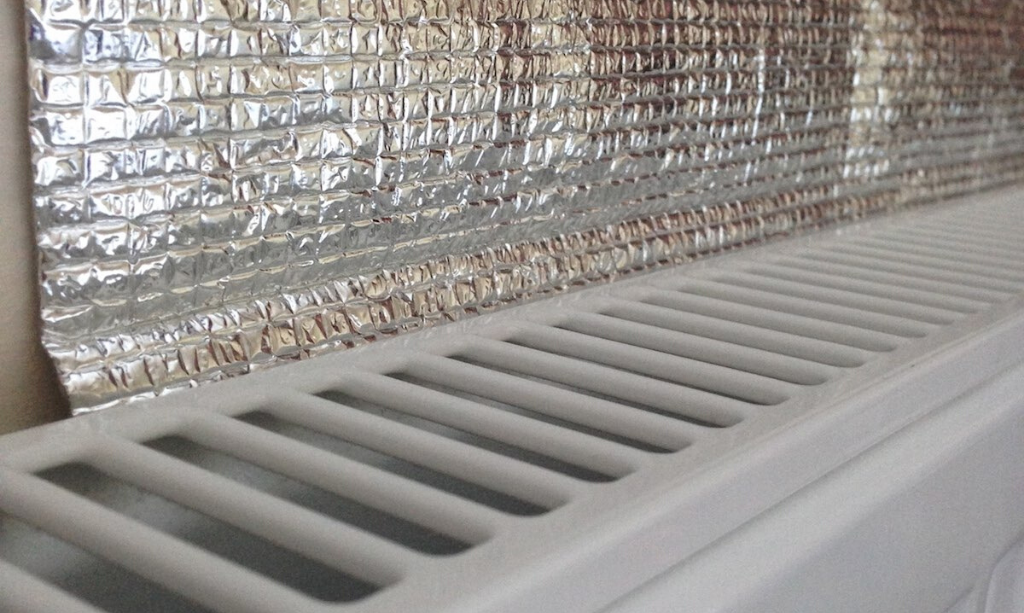
58) Make your bed warm and toasty with a hot water bottle
Still struggling to stay warm? A good old fashioned hot water bottle will do the trick. When you get home from work or play, stick a hot water bottle under the covers and by the time you’re ready to hop into bed it will be warm and toasty, meaning you can turn the heating off overnight.
Utility Room
59) Don’t waste your time pre-rinsing the pots
Whether you wash your dishes by hand or stick them in the dish washer, choose between the two and don’t do both. Both methods are effective enough by themselves so you can save on your water usage.
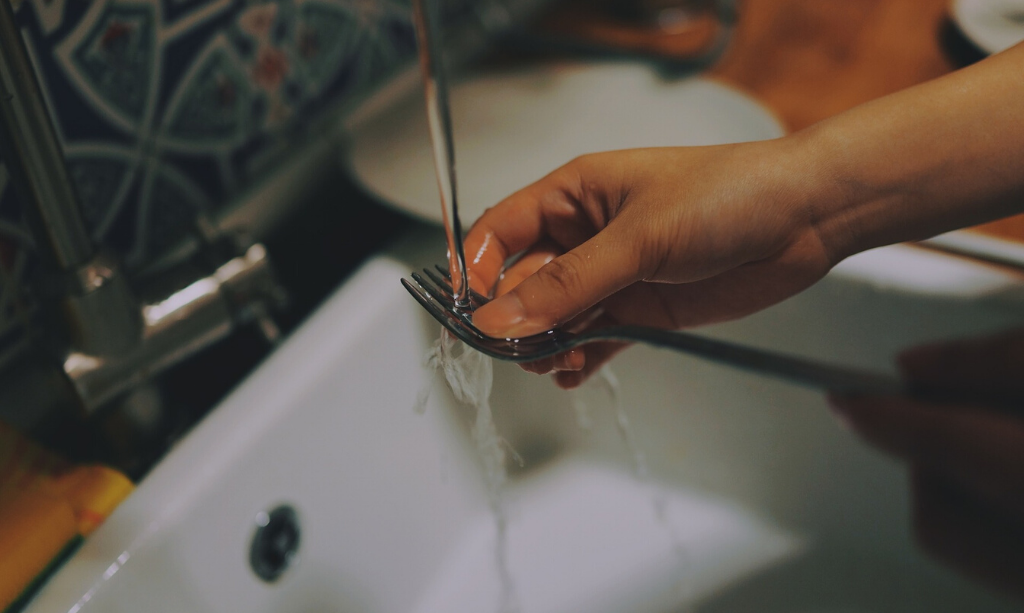
60) Use reusable cloths for cleaning up spillages
Accidents happen, when you are in need of a quick clean instead of reaching for the paper towels grab a reusable cloth. Some great reusable cloths for an eco-friendly home include; cellulose cloths, bamboo cleaning cloths and cotton/wool mixed cloths. Use them to clean and hand wash or stick them in the washing machine (on a cold wash of course!)
61) Wash your clothes at 30 degrees
By washing you laundry at 30 degrees or lower you will be using around 40% less electricity, on average saving yourself £13 a year on your bills. Washing at a lower temperature is not only better for creating an eco-friendly home but it also protects the dyes, so the colours are less likely to fade and will last longer. Additionally, colder water is perfect for preserving the fit of the clothes by preventing shrinkage.
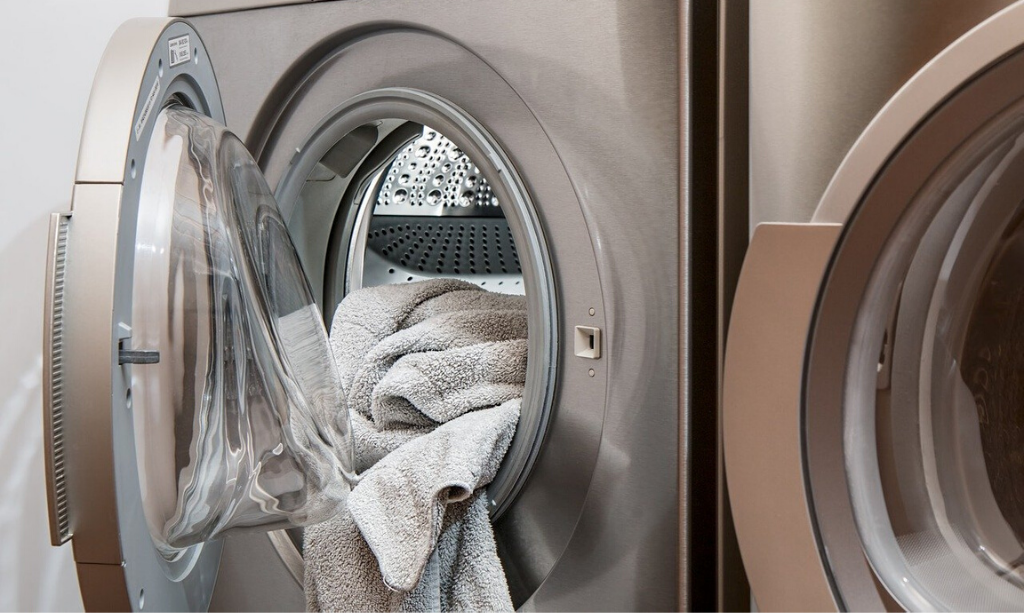
62) Install a water tank for a sustainably sourced water supply
it’s a common misconception that water tanks are only suitable for rural areas. This is simply not the case – those living in the city can benefit too! There is a water tank size to fit every home and the huge benefits of doing so include, making use of the water that is freely available which not only is great for the environment but will also save you a pretty penny on your bills!
63) Make your own homemade dishwasher detergent tabs
There are many benefits from making your own detergent tablets; they are not only perfect for an eco-friendly home, they are extremely cost efficient!
Check out One Good Thing by Jillee for an amazing receipt to get you started.
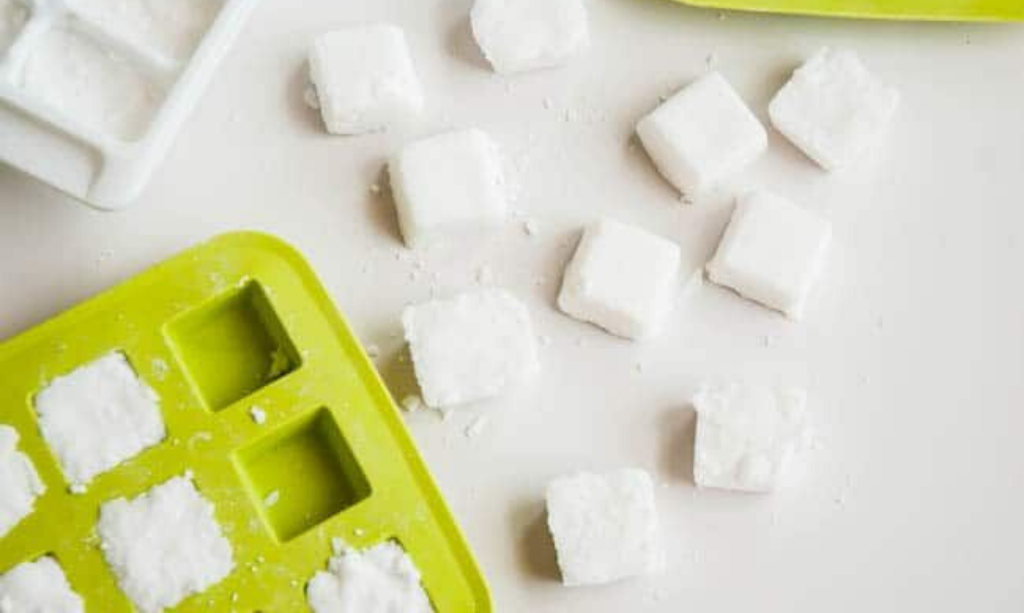
64) Use vinigar as an alternative cleaning product
Say goodbye to your chemical filled cleaning products and make vinegar your new go to for cleaning. High in acidity, vinegar naturally kills bacteria, germs and mould. Though vinegar is a great alternative always be sure to research what can and cannot be cleaned with it.
65) Cavity wall insulation
Heat loss through walls can be a nightmare, particularly in older houses. Consider Cavity wall insulation to reduce heat loss. By fitting the insulating material into the gaps between the brick and the inside wall, it will prevent air circulating inside the cavity.
66) Use concentrated detergents
Washing detergents are more often then not stored in plastic bottles, and we understand not everyone has the time to make homemade detergent. If this is the case, opt for a higher concentration, this will last much longer than a standard bottle so you won’t have to re-buy as frequently, reducing your plastic use for a more eco-friendly home.
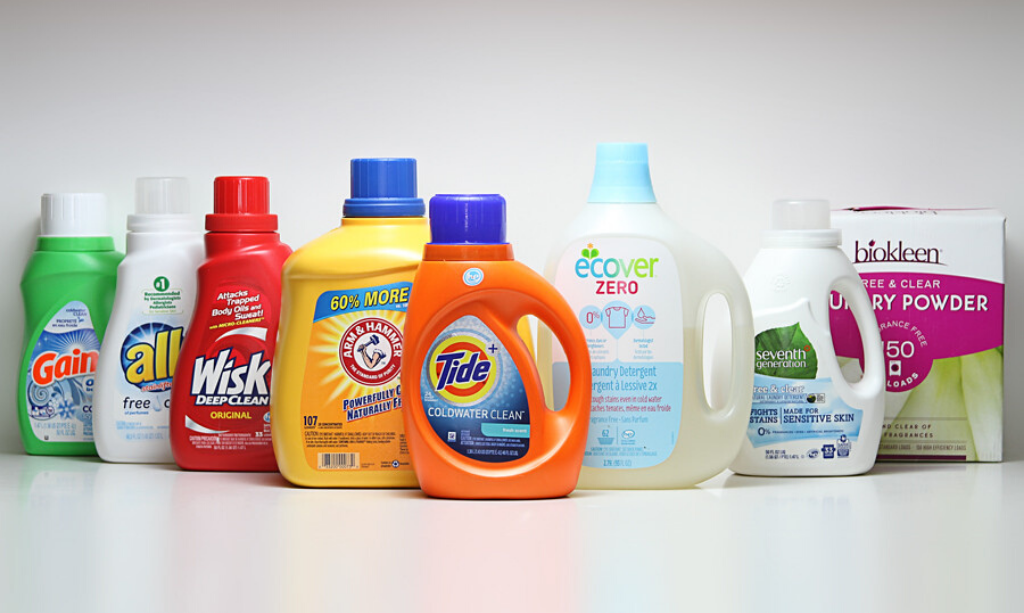
Garden
67) Grow your own allotment full of fresh fruit and veg
If you are a garden lover, growing your own fruit and veg is the way forward in sustainable and healthy eating. By growing your own, you can eat happy knowing that all produce is organic and chemical free, plus you can choose to grow all your fave veg!
68) Grow Bee friendly plants
Bees are a hugely important part of our eco-system, and in recent year they have been under threat, so it is down to us to help support the bees. Fill your garden with beautiful bee-friendly flowers rich with nectar, including Lavender, Viper’s Bugloss, Bluebells and many more.

69) Let the laundry hang dry
Every hour that a dryer is in use 2-3 kg of carbon emissions are produced, take advantage of the sunny days by hanging out the laundry to dry. From rotary spinners to washing lines, they are a quick and easy way to dry your clothes while saving the planet!
70) Reuse old jars, cans and glasses as plant pots
As mentioned earlier, jars, glasses and tins can be reused in many creative ways. Fill your garden with character by planting flowers and plants in recycled tins and jars to create a vintage eco-friendly home!

71) Conserve water with a water butt
Why not, it’s free and will massively reduce your water bills? Water butts can be an efficient and cost-effective way to reuse natural rainwater. They can reduce your council’s water system strain by up to 70%, meaning you are helping your local community as well as the environment.
72) Use natural pest control
Protceting your home grown fruit and veg is important, but consider the pesticides you are using to protect them. Instead of pumping chemicals into your fresh produce opt for organic pesticides such as salt sprays. Not only will your fruit and veg come out fresh and juicy but you are protecting your local soil.
Be sure to choose the right product for the job so it won’t have any detrimental effect on other insects around the garden.
73) Save energy with a solar panel roof
Contrary to popular belief, solar panels are not just for sunny countries as now many work off daylight rather than sunlight. There are many benefits to adding solar panels to your home, for example they are a renewable energy source, they will reduce electricity bills and have a low maintance cost.

74) Help encourage local wildlife to flourish
A key feature to creating an eco-friendly garden is by keeping in touch with nature. By allocating just a little bit of time to your garden, you can create a haven for your local wildlife, include bird boxes and feeders, insect hotels and gaps under your fences to allow hedgehogs to roam freely.
75) Consider the time that you are watering your plants
Watering during hot periods such as lunchtime and early afternoon. This will waste water due to the evaporation when the sun is at its strongest and will be less beneficial to the plants themselves. The most beneficial time to water the garden would be either the early morning or evening, to get the most out of the water.
76) Introduce a water feature to your Garden
Adding a water feature can bring your garden to life…literally! Ponds allow for fish and amphibians to flourish in a natural habitat creating your own eco-system at your door step. On top of this flowing water such as fountains and waterfalls, not only adds a sense of tranquillity and beauty to your garden but also helps to remove harmful pollutants from the air.
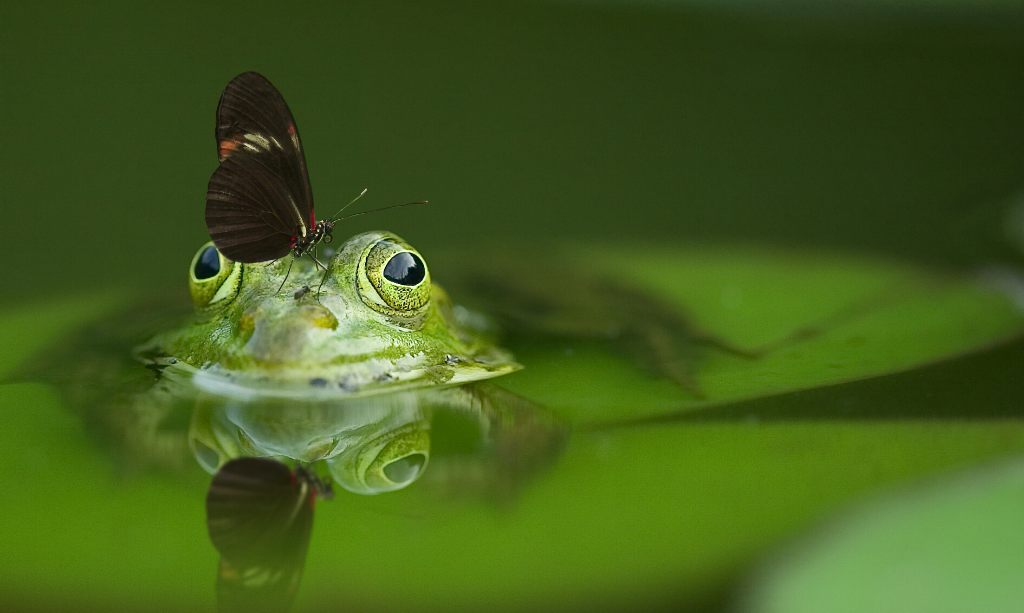
77) Use solar panel garden lights
Instead of using large outdoor lighting you could try to introduce some solar lights powered. They come in many sizes, shapes and budgets and are easy to install. Storing energy from the natural light during the day and they then release this when needed in the night time.
FAQ’s for n Eco-Friendly Home
What are some of the simplest ways to make a home eco-friendly?
There are many little changes you can make easily in your home, for example switching your bulbs to energy efficient LED ones. Another small change you can make that will have a huge impact on not only the environment but on your bills is unplugging appliance when not in use from the TV to the Microwave.
Are sustainable products more expensive (and, if so, is the expense justified)?
When it comes to eco-friendly products, the upfront cost is usually more however this is with the intent that overtime you will be saving money. For example, high-efficiency washer and dryers are more expensive but save a significant amount in the long run due to the less use of energy and electricity. Additionally, if you were to opt for smaller changes such as metal straws and reusable bamboo mugs these are cheap value items that will last a long time while having a huge impact on helping our environment.
What materials are the most eco-friendly for the home?
It is important to consider the materials being used when decorating your home, for example making sure that the wood for flooring and furniture is FSC-certified.
In terms of soft furnishing natural materials are always the most sustainable option. Natural rugs are made of materials like jute, bamboo, hemp and sisal and they represent a stylish option that fits in with the sort of design that suggests a keener approach to protecting the environment. Jute make good use of natural fibres ensuring that nothing is wasted, and they do not involve massive industrial costs. This makes them a very economical choice for households where saving money is as important as saving the environment.
Thoughts?
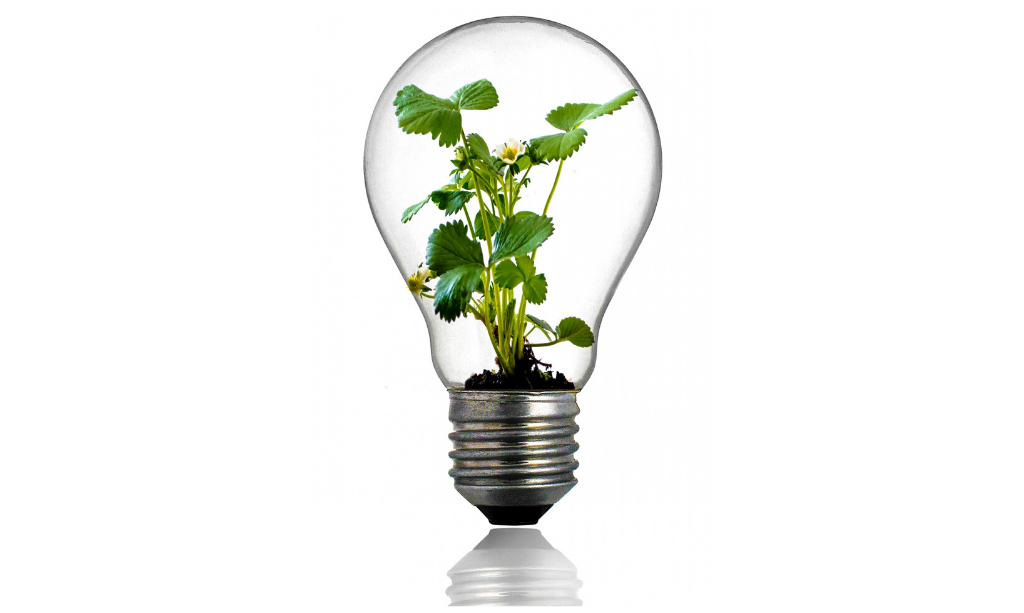
Here at the Rug Seller, we want to share the importance of protecting our environment. We hope you have enjoyed reading our top tips and have left you feeling inspired to create a more eco-friendly home!
Do you have any more tips that you think are handy or would benefit others? Leave a comment below and let us know!
For more informative and entertaining home ideas check out our blog

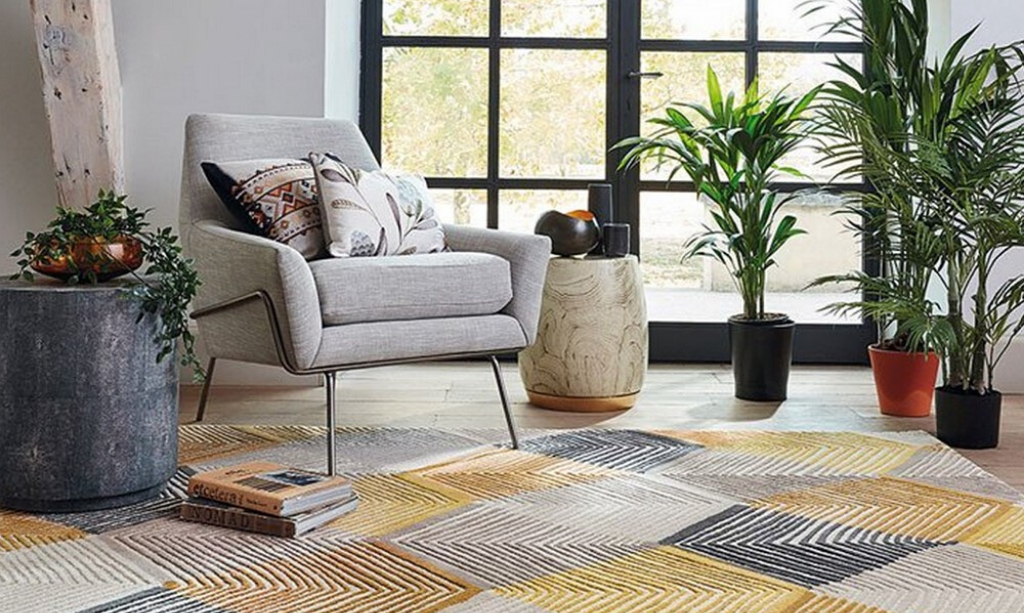
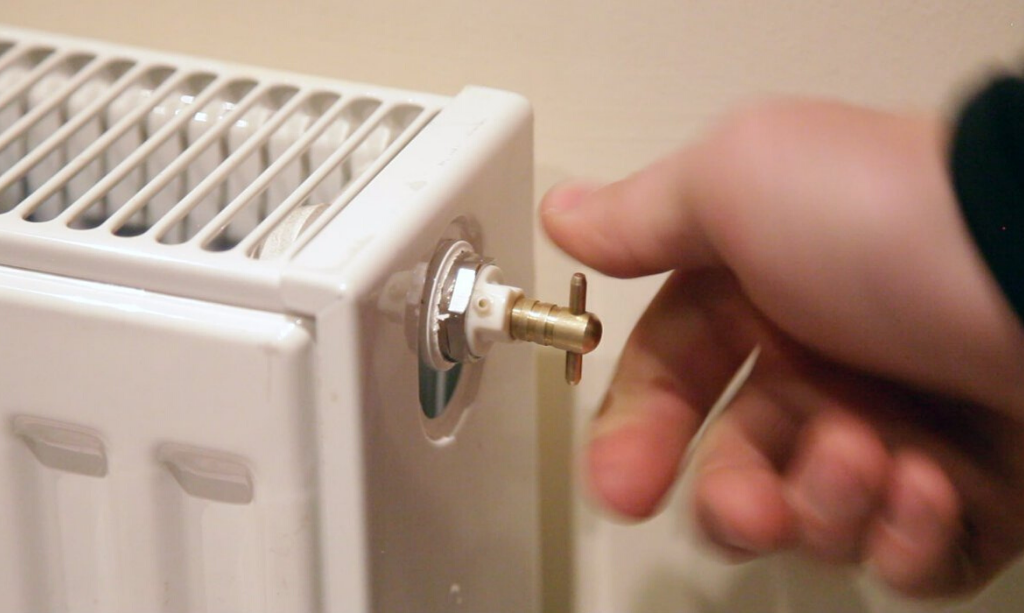
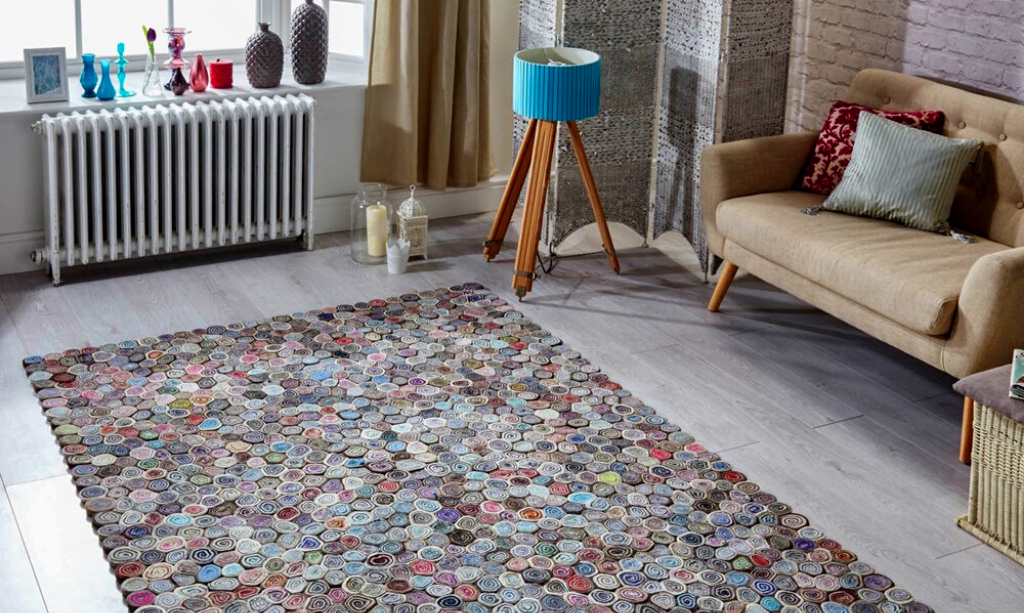
Get Social